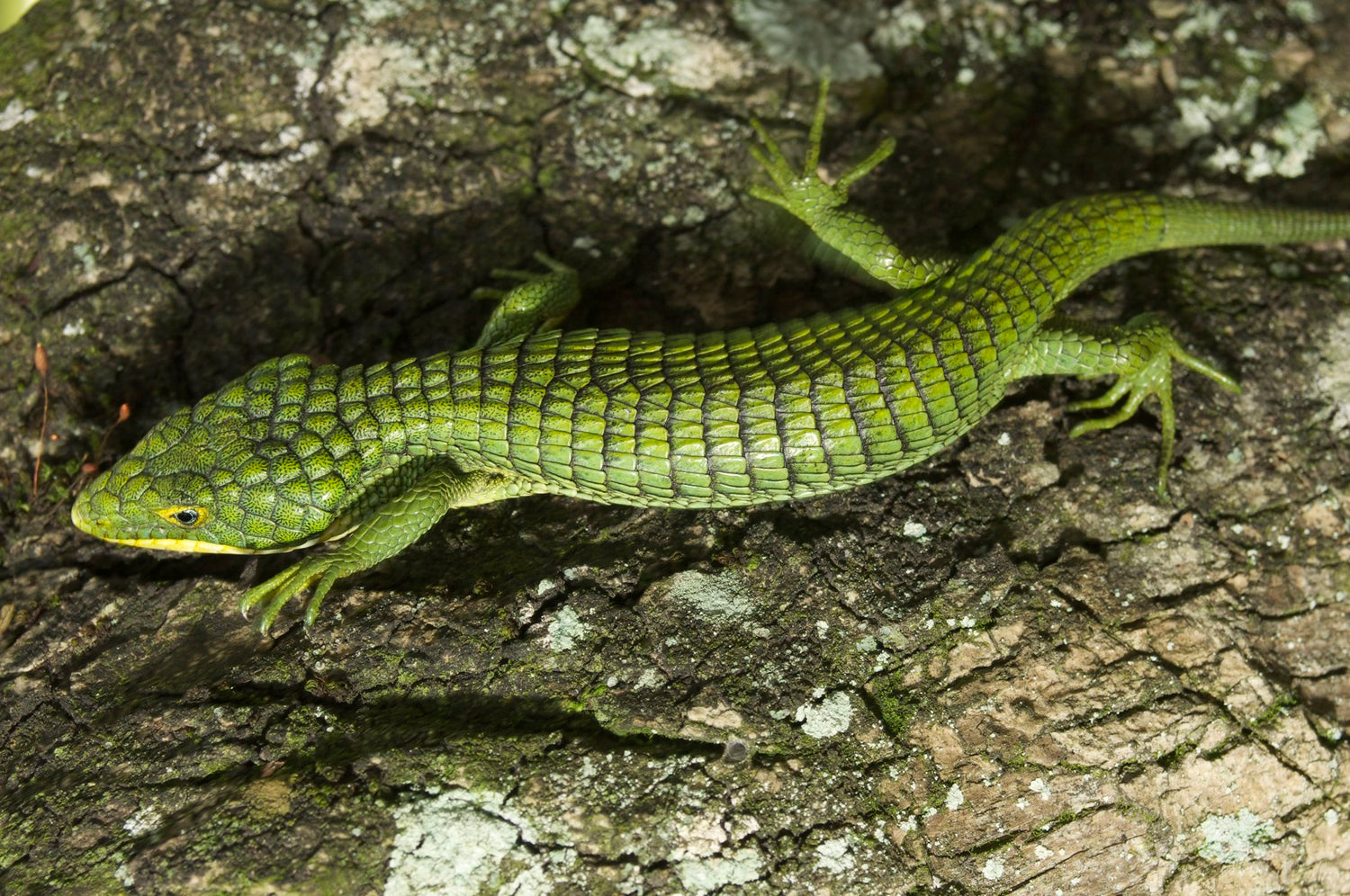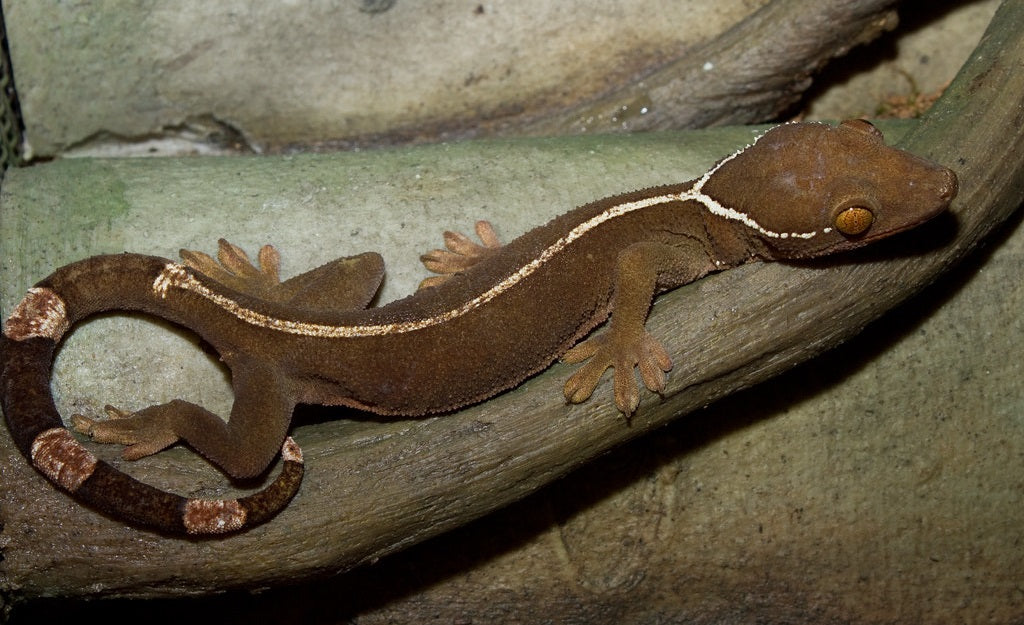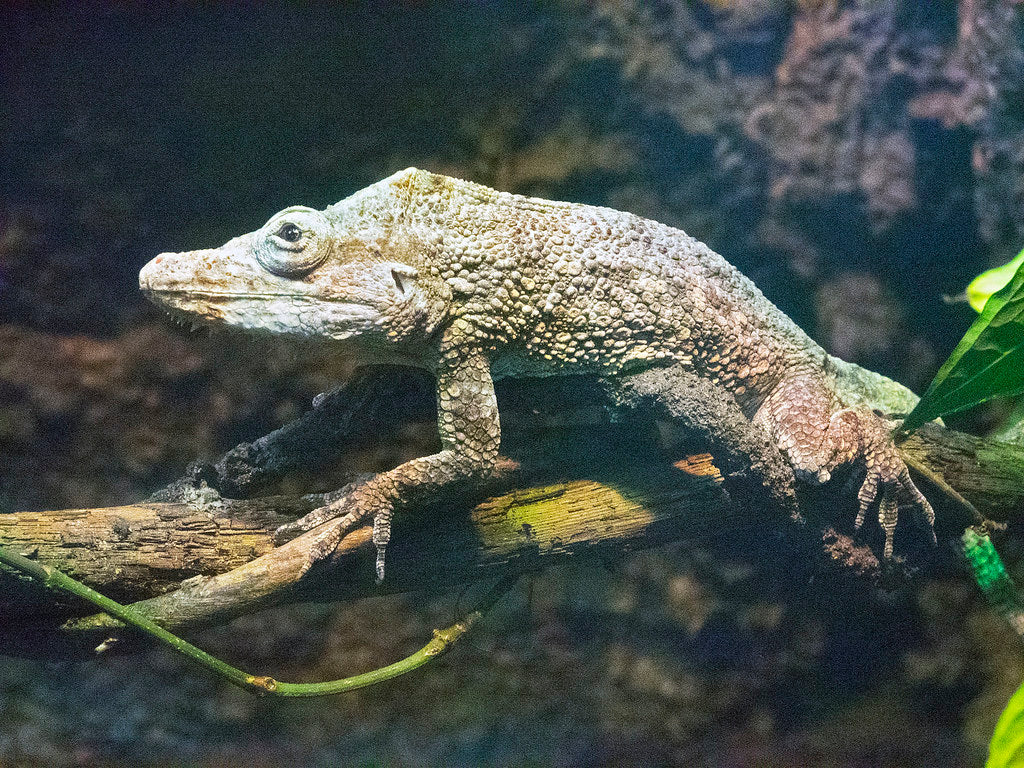Mexican arboreal alligator lizards (also commonly referred to by their genus name, Abronia), are small, diurnal, arboreal lizards native to the cloud forests of Mexico, Guatemala, and Honduras. They are particularly dependent on bromeliads. This species is endangered in the wild due to various factors, including misguided local traditions and habitat destruction.
There are 29 different species of Abronia, each with a unique color and/or pattern. However, they can generally be identified as strong-looking lizards with large scales, a triangular head, and a prehensile tail. Size differs by species, but the most common species in captivity reach about 6” long. Their large scales and boldness toward humans are what earned them their “alligator lizard” nickname.
Abronia have very specific needs which must be met in captivity for their survival, which requires extensive preparation on the part of the keeper.
How much space do Abronia lizards need?
A single Abronia should be housed in no smaller than an 18”L x 18”W x 36”H enclosure. Of course, larger is always better! This enclosure should be made of mesh rather than glass or PVC in order to ensure superior ventilation.
Cohabitation (keeping multiple Abronia lizards in the same enclosure) is not recommended.
Do Abronia lizards need UVB?
Yes!
UVB lighting is required for Mexican arboreal alligator lizards to stay healthy. Aside from helping provide a day/night cycle and providing an infinite supply of vitamin D, UVB is also essential to their overall health. Here are the best UVB bulbs for Abronia:
- Arcadia T5 HO 12%, 22”
- Zoo Med T5 HO Reptisun 10.0, 22”
The basking branch or vine should be positioned so the lizard’s back is no closer than 12” below the lamp. The UVB bulb should be housed in a reflective T5 HO fixture like the Arcadia ProT5 Fixture. Make sure that the fixture your UVB bulb is housed in does not have a clear plastic bulb cover, as plastic and glass block UVB.
Abronia are diurnal, which means that they are most active during the day. This means that it’s beneficial to provide an additional daylight-spectrum lamp to make sure the enclosure is brightly illuminated. The 22” Arcadia LED Bar or similar is a good choice for this.
Provide 12 hours of light each day to simulate daylight.
What basking temperatures do Abronia lizards need?
Mexican arboreal alligator lizards prefer a fairly cool environment with a basking surface temperature of 90-92°F and a general air temperature of 75-80°F. Nighttime temperatures should be allowed to drop down to 50-65°F. Surface temperature should be measured with a temp gun, and ambient temperature should be measured with a digital probe thermometer, with the probe placed in the middle of the enclosure in a shaded spot.
Provide heat for your lizard with a 40w heat lamp placed on one side of the enclosure. For best results, use the Exo Terra Compact Top fixture. Do not use ceramic heat emitters (CHEs), heat mats, red bulbs, or blue bulbs, as these are not as effective.
The heat lamp should be turned off at night. If needed, use a terrarium cooler such as the Zoo Med Repti Cooler to ensure adequately cool nighttime temps.
What humidity levels do Abronia lizards need?
Mexican arboreal alligator lizards do best with high ventilation and high humidity, with about 80% during the day and up to 100% at night. Mist 2x/day with a pressure sprayer first thing in the morning and in the evening, or better yet, use an automatic misting system to maintain appropriate humidity levels. Then run a humidifier on and off over the course of the night. For best results, connect your humidifier to a humidistat.
Reptile humidifiers and foggers should only be used with distilled water and require frequent disinfecting to keep your reptile from getting sick.
Humidity should be measured with a digital probe hygrometer with the probe in the middle of the terrarium. Humidity levels that are consistently too high or low will make your pet sick!
What substrate is good for Abronia lizards?
Substrate covers the floor of your lizard’s terrarium and helps make the enclosure more attractive, but it also helps maintain humidity. It’s ideal to use a substrate that imitates the “substrate” that the reptile naturally lives on in the wild. For Mexican arboreal alligator lizards, that means it should resemble a tropical forest floor.
We recommend the following substrates for Abronia:
- Zoo Med Eco Earth
- Zoo Med ReptiSoil
- Exo Terra Plantation Soil
- Zilla Jungle Mix
- Galapagos Blond Sphagnum Moss
Layering clean, chemical-free leaf litter on top of the substrate can also help with humidity.
Substrate should be at least 2” deep and completely replaced every month to stay fresh. Remove poop and urates daily, along with contaminated substrate.
What decor can you use in an Abronia lizard terrarium?
A bare, minimalistic enclosure leads to a stressed lizard — and a stressed reptile is a reptile that quickly gets sick! In order to create a functional setup for your Mexican arboreal alligator lizard, you will need plenty of branches, cork tubes, vines, and plants (preferably live). Arrange the foliage to create hiding places for the Abronia to use as needed, with an open area under the heat lamp.
What do Abronia lizards eat?
Mexican arboreal alligator lizards are strictly insectivorous, which means that they need to eat a variety of insects to get the nutrition that they need. Offer as many insects as your Abronia is willing to eat in a day.
Feeder insect options: crickets, grasshoppers, discoid roaches, dubia roaches, banana roaches, mealworms, hornworms, silkworms, snails, black soldier fly larvae
Remember, variety is key to great nutrition!
Supplements
You will also need calcium and vitamin supplements to prevent your pet from developing a deficiency. Use Repashy Calcium Plus LoD, with occasional additions of Repashy Vitamin A Plus and Repashy SuperPig for carotenoid support and optimum color.
It is also important to make sure that all feeders are well hydrated and gutloaded!
Water
Although your lizard will get most of its drinking water from daily mistings, it’s a good idea to also provide a wall-mounted water dish. Change the water daily and scrub the bowl with a reptile-safe disinfectant weekly, or whenever it becomes soiled.
Do Abronia lizards like to be handled?
Truthfully, few reptiles actually “like” to be handled. When it comes to Mexican arboreal alligator lizards, they’re generally “hands-off” pets that are better to simply admire than to try to play with. The key to building a trusting relationship with your pet is to provide as many positive interactions as possible. Offering food from feeding tweezers is a good way to bond.
*This care sheet contains only very basic information. Although it’s a good introduction, please do further research with high-quality sources to obtain additional information on caring for this species.
"Abronia graminea" by David Jimeno is marked with CC BY-NC-SA 2.0.




Leave a comment
This site is protected by hCaptcha and the hCaptcha Privacy Policy and Terms of Service apply.